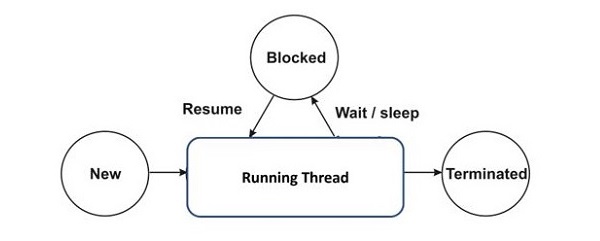Daemon threads in Python are useful for running background tasks that are not critical to the program’s operation. They allow you to run tasks in the background without worrying about keeping track of them.
Python provides two types of threads: non-daemon and daemon threads. By default, threads are non-daemon threads. This tutorial provides a detailed explanation with relevant examples about daemon threads in Python programming.
Overview of Daemon Threads
Sometimes, it is necessary to execute a task in the background. A special type of thread is used for background tasks, called a daemon thread. In other words, daemon threads execute tasks in the background. These threads handle non-critical tasks that may be useful to the application but do not hamper it if they fail or are canceled mid-operation.
Also, a daemon thread will not have control over when it is terminated. The program will terminate once all non-daemon threads finish, even if there are daemon threads still running at that point of time.
Difference Between Daemon & Non-Daemon Threads
| Daemon | Non-daemon |
|---|---|
| A process will exit if only daemon threads are running (or if no threads are running). | A process will not exit if at least one non-daemon thread is running. |
| Daemon threads are used for background tasks. | Non-daemon threads are used for critical tasks. |
| Daemon threads are terminated abruptly. | Non-daemon threads run to completion. |
Daemon threads can perform tasks such as −
- Create a file that stores Log information in the background.
- Perform web scraping in the background.
- Save the data automatically into a database in the background.
Creating a Daemon Thread in Python
To create a daemon thread, you need to set the daemon property to True of the Thread constructor.
t1=threading.Thread(daemon=True)
By default the daemon property is set to None, If you change it to not None, daemon explicitly sets whether the thread is daemonic.
Example
Take a look at the following example to create a daemon thread and check whether the thread daemonic or not using the daemon attribute.
import threading
from time import sleep
# function to be executed in a new threaddefrun():# get the current thread
thread = threading.current_thread()# is it a daemon thread?print(f'Daemon thread: {thread.daemon}')# Create a new thread and set it as daemon
thread = threading.Thread(target=run, daemon=True)# start the thread
thread.start()print('Is Main Thread is Daemon thread:', threading.current_thread().daemon)# Block for a short time to allow the daemon thread to run
sleep(0.5)
It will produce the following output −
Daemon thread: True Is Main Thread is Daemon thread: False
If a thread object is created in the main thread without any parameters, then the created thread will be a non-daemon thread because the main thread is not a daemon thread. Therefore, all threads created in the main thread default to non-daemon. However, we can change the daemon property to True by using the Thread.daemon attribute before starting the thread, nothing but before calling the start() method.
Example
Here is an example −
import threading
from time import sleep
# function to be executed in a new threaddefrun():# get the current thread
thread = threading.current_thread()# is it a daemon thread?print(f'Daemon thread: {thread.daemon}')# Create a new thread
thread = threading.Thread(target=run)# Using the daemon property set the thread as daemon before starting the thread
thread.daemon =True# start the thread
thread.start()print('Is Main Thread is Daemon thread:', threading.current_thread().daemon)# Block for a short time to allow the daemon thread to run
sleep(0.5)
On executing the above program, we will get the following output −
Daemon thread: True Is Main Thread is Daemon thread: False
Managing the Daemon Thread Attribute
If you attempt to set the daemon status of a thread after starting it, then a RuntimeError will be raised.
Example
Here is another example that demonstrates the getting the RuntimeError when you try to set the daemon status of a thread after starting it.
from time import sleep
from threading import current_thread
from threading import Thread
# function to be executed in a new threaddefrun():# get the current thread
thread = current_thread()# is it a daemon thread?print(f'Daemon thread: {thread.daemon}')
thread.daemon =True# create a new thread
thread = Thread(target=run)# start the new thread
thread.start()# block for a 0.5 sec for daemon thread to run
sleep(0.5)
It will produce the following output −
Daemon thread: False Exception in thread Thread-1 (run): Traceback (most recent call last): . . . . . . . .File "/usr/lib/python3.10/threading.py", line 1203, in daemonthread.daemon = TrueRuntimeError: cannot set daemon status of active threadraise RuntimeError("cannot set daemon status of active thread")
